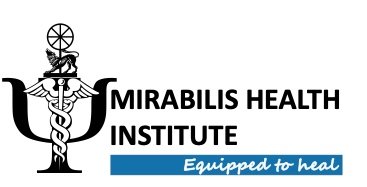An introduction to EMDR
EMDR is a psychotherapy that was developed by Francine Shapiro in 1987.
The treatment involves the person accessing a traumatic event and then processing the trauma memory through the application of an external stimulus: this is referred to as Bilateral Stimulation (BLS). The method has 8-Phases with procedural steps for each phase that are repeated until the trauma no longer has any dysfunctional impact on them.
The most common form of Eye Movement Desensitisation and Reprocessing (EMDR) involves the application of Eye Movements, although other forms such as tapping can be substituted for eye movements. This process involves moving one's eyes back and forth at various speeds while recalling the traumatic event.
Eye Movement Desensitisation and Reprocessing (EMDR) therapy (Shapiro, 2001) is a psychotherapy initially developed in 1987 by Dr Francine Shapiro PhD for the treatment of post-traumatic stress disorder (PTSD) and the foundation for EMDR is guided by the Adaptive Information Processing model that was articulated by Roger Solomon and Francine Shapiro (Shapiro 2007). EMDR is an individual therapy typically delivered once a week for a total of 6-12 sessions, although some people benefit from fewer sessions. Sessions can be conducted on consecutive days and over an extended period of hours in some services; group EMDR protocols have also be developed.
The Adaptive Information Processing (AIP) model considers symptoms of PTSD and other disorders (unless physically or chemically based) to result from past disturbing experiences that continue to cause distress because the memory was not adequately processed. These unprocessed memories are understood to contain the emotions, thoughts, beliefs and physical sensations that occurred at the time of the event. When the memories are triggered these stored disturbing elements are experienced and cause the symptoms of mental disorder. This model of understanding mental disorder is referred to as trauma-informed and the trauma model has been written about extensively by Dr Colin Ross MD.
Unlike other treatments that focus on directly altering the emotions, thoughts and responses resulting from traumatic experiences, EMDR therapy focuses directly on the memory of the original event, and the intervention is intended to change the way that the memory is integrated in the brain, which reduces and eliminates the problematic symptoms.
During EMDR therapy, clinical observations suggest that adaptive information processing is stimulated by EMDR’s standardised procedures, which incorporate the use of eye movements and other forms of rhythmic left-right (bilateral/bifocal) stimulation (e.g., tones or taps). While clients briefly focus on the trauma memory and simultaneously experience bilateral stimulation (BLS), the vividness and emotion of the memory are reduced. EMDR therapy is not an exposure method and does not require maintaining an intense focus on the traumatic material.
The treatment is recommended for the treatment of PTSD in numerous international guidelines including ISTSS, WHO, American Psychological Association (APA), NICE , US Department of Veterans Affairs, and the Cochrane Database of Systematic Reviews.
What is a Typical EMDR Therapy Session Like?
EMDR therapy is a psychotherapy that is used to process the traumatic memories and experiences of a person, helping theme to reach an adaptive state.
The EMDR therapy session begins with the therapist instructing the client to focus on the traumatic event and its associated images, thoughts, and emotions. The therapist next guides the person through the reprocessing phases of the method [Phases 3 to 7] and then instructs them to notice how the memory is changing, noticing how their body feels and observing what emotions they are experiencing. The client does not need to give detailed feedback, and many people describe it is helpful that they do not need to tell the therapist everything that they are thinking. This process is repeated until no new material comes up or until they feel the material is processed adequately.
Watch a good friend of ours Jamie Marich do a live demonstration…
Watch master EMDR clinician and trainer Dr. Jamie Marich work with a single incident trauma case using Phases 1-8 of the standard EMDR therapy protocol. Excellent example of working with abreaction and a future template contained in this demonstration.
What are the Benefits of Using EMDR Therapy?
Eye Movement Desensitisation and Reprocessing therapy is a psychotherapeutic treatment for the psychological impact of trauma. It has been found to be effective in the treatment of PTSD, anxiety, depression, psychosis and other conditions.
The therapy works by helping the mind restore balance and process stuck material by moving the eyes back and forth in a specific pattern while recalling distressing memories. It has been found to be effective for treating PTSD, anxiety, depression, and other conditions.
The benefits of EMDR are: it can help people with PTSD reduce their symptoms; it can help people with anxiety disorders reduce their symptoms; it can help people with depression reduce or eliminate their symptoms; it can help people overcome addiction issues; it can help people who have experienced childhood sexual/physical abuse.
Conclusion: Why EMDR Therapy should be the Default Standard of Care for PTSD.
The EMDR therapy is a very effective treatment for PTSD. It is an efficient and cost-effective way to help people recover from the trauma they have experienced. EMDR therapy is a psychotherapy that uses eye movements, sounds, and tapping on the body to process memories of traumatic events.
EMDR therapy has been shown to be more effective than other common treatments for PTSD such as Cognitive Processing Therapy (CPT), Prolonged Exposure Therapy (PE), or Cognitive Behavioural Therapy (CBT).
It has also been found that EMDR therapy has a lower dropout rate than other therapies and can be used in combination with medications.
EMDR therapy should be considered as the first line of treatment for PTSD due to its effectiveness, efficiency, and low dropout rates.



